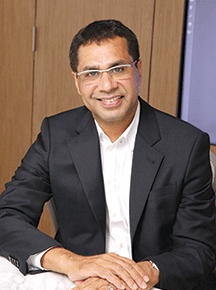Dilip Thakore interviewed Faizal Kottikollon, promoter-chairman of the Dubai-based KEF Co. Ltd and the Faizal & Shabana Foundation in Bangalore. Excerpts:
 What were the factors and motivations which prompted you to enter the education sector?
What were the factors and motivations which prompted you to enter the education sector?
After I sold the last tranche of my shares in KEF Holdings, Sharjah, which had promoted and developed Emirates Techno Castings LLC into one of the world’s top three valves, pipes and steel companies for the oil, gas and power industries, for almost $500 million, my wife Shabana and I promoted the Faizal & Shabana Foundation in 2012. We felt this was a good way to help the cause of public education in India and the UAE, and of giving back to the countries which had given us good education and excellent business opportunities.
In the UAE we endowed the American University of Sharjah. While looking for a project to support in India, I was informed about PRISM started by Pradeep Kumar, MLA of the North Calicut constituency where I was born. We were very impressed with the master plan he had prepared in consultation with IIM-Kozhikode for the development of the Government Vocational Higher Secondary School, Naddakavu (GVHSS-N) for girls. We felt that involvement with the master plan offered an opportunity to demonstrate a model public-private partnership school to the Kerala state government and other philanthropists and well-wishers of education in India.
Do you believe the GVHSS-N public-private partnership model can be replicated nationwide?
It’s too early to think about a nationwide rollout of the GVHSS-N model, but it’s already happening in Kerala. MLAs from all political parties looking to invest their special projects and assets creation allowances are enthused by this holistic community-involvement school development model. Parent-Teacher Associations of every school have to contribute towards the maintenance costs of their schools. Therefore I am confident we will attain the foundation’s Mission 100 Schools across Kerala by 2020, which will make high-quality world-class education available to 150,000 children in the state within the next five years. Hopefully it will also inspire philanthropists countrywide.
How optimistic are you about the future of Indian education and India?
]Very optimistic. The country is gifted with the world’s largest child and youth population and all of them are hard-working and eager to learn, if given the opportunity. I believe philanthropy is growing in India and most successful people want to help and uplift the underprivileged, and are quite willing to contribute towards public projects in education, health and infrastructure development. But they want to invest in transparent and sustainable projects. I forsee steady and systematic growth of the economy as quality education spreads across the country.